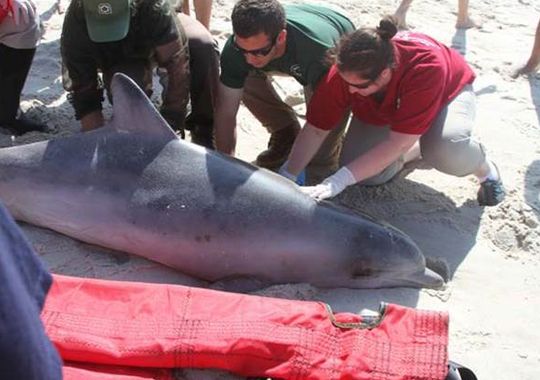Seal Rescue in Delaware Bay
Harp Seal Stranded on Thompson’s Beach
By: Stephanie Feigin, Wildlife Ecologist
Conserve Wildlife Foundation’s Wildlife Ecologist Stephanie Feigin and Dr. Larry Niles of LJ Niles Associates LLC found a stranded Harp Seal on Thompson’s Beach last week while out monitoring CWF’s Delaware Bay restoration work.
Larry called the Marine Mammal Stranding Center to come out and assess the situation. When the stranding team arrived, they were able to see that the seal had been eating sand, making him/her sick. Sometimes, Harp Seals confuse sand with ice, as their primary habitat is in Arctic waters. In an attempt to re-hydrate themselves when they make their way down to our beaches, they will lick the sand on our beaches, thinking it is the ice they are used to, making them sick.
The Marine Mammal Stranding Center took the seal back with them to nurse him/her back to health and they are optimistic that he/she will make a full recovery.
If you find a stranded seal, always remember to call the Marine Mammal Stranding Center and give professionals the chance to rescue the animal.
Learn more:
Stephanie Feigin is the Wildlife Ecologist for Conserve Wildlife Foundation of New Jersey.
